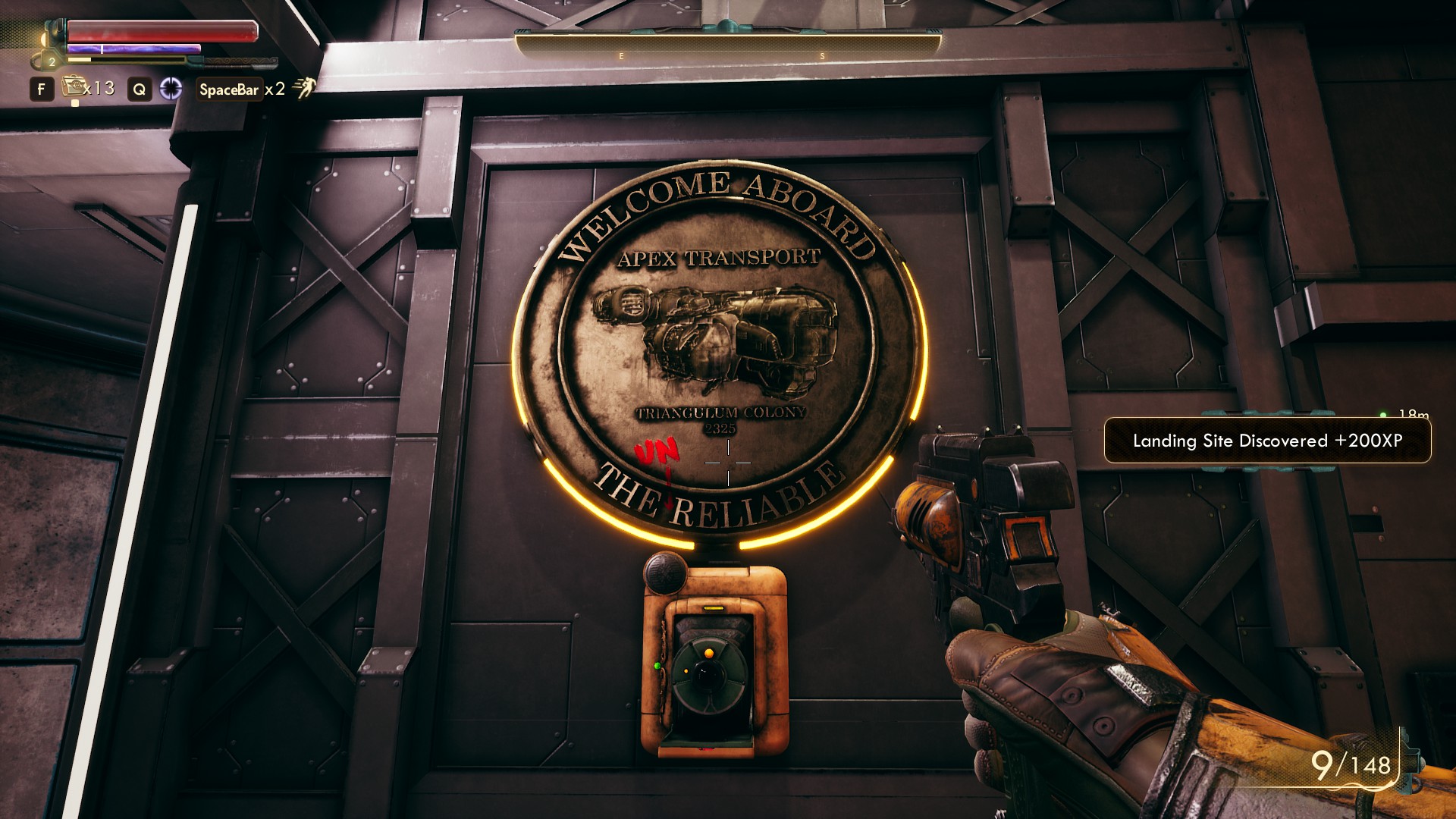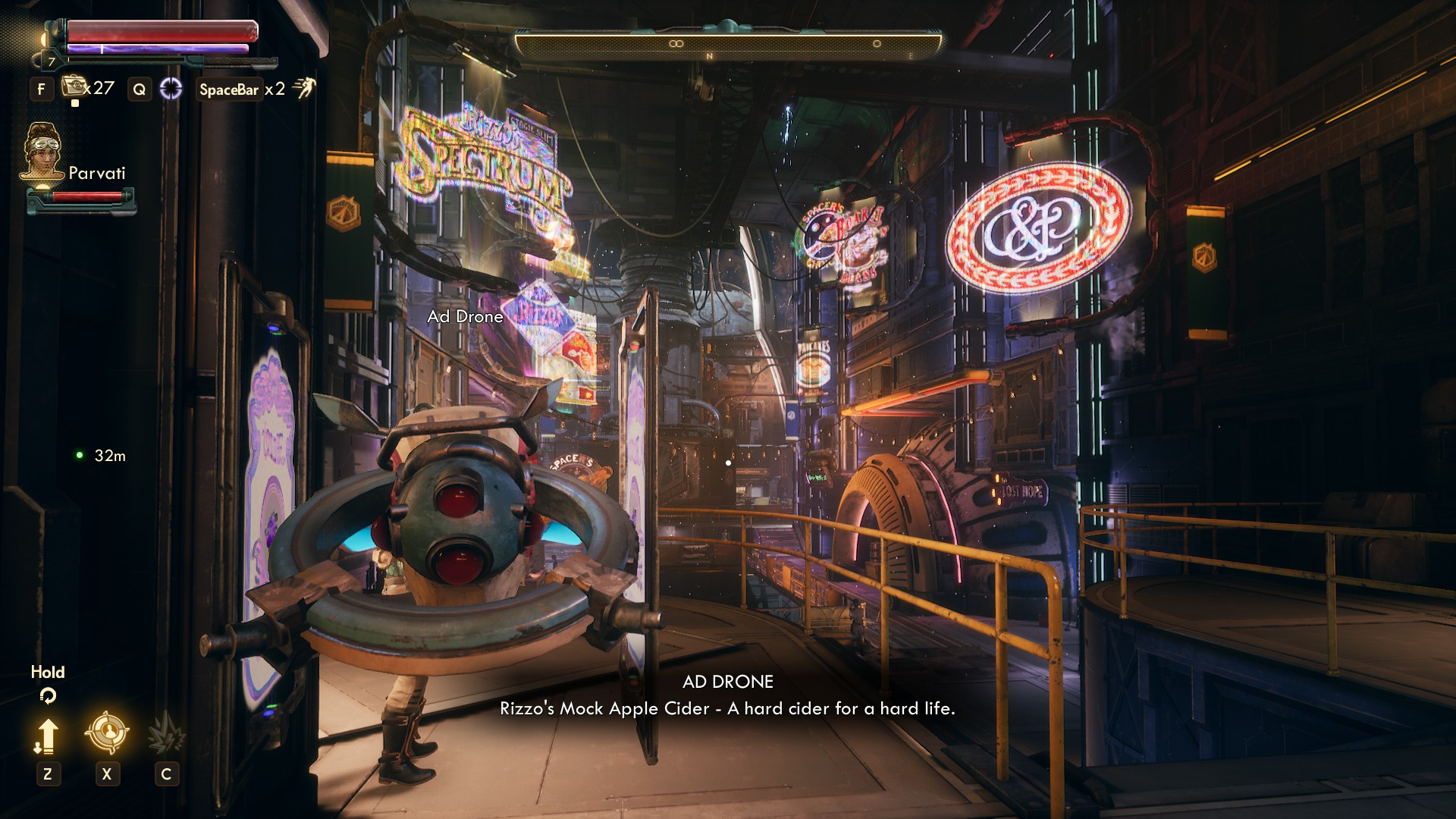I played the Steam version of the base game, with no DLC. I did not play the Spacer’s Choice “remaster” as it has a reputation for being broken and poorly put together. I played the game to completion on normal difficulty, completing most of the side quests, spending time with all my companions, and trying to get the most out of one playthough.

The game begins as a derelict colony ship called the Hope has just reached the Halcyon system, the setting of the game. The system had already been settled years earlier by a sister colony ship, but due to setbacks the Hope was decades behind schedule and presumed lost by the colony. The original ship apparently contained too many middle managers for its own good, as the human colonies have become the fiefdoms of various corporations who can’t think beyond short terms profits. The appearance of the Hope, containing thousands of frozen scientists and engineers could provide a boost in the chances of human success (assuming a way to bring everyone out of stasis without killing them is found), but the corporations don’t know how to handle the novel situation. A rogue scientist unwilling to sit back breaches the corporate blockade and manages to grab one frozen passenger from the Hope before fleeing. The player is of course, that lucky person who is freed. Already the game’s conceit of a person chosen at random from among thousands lends itself to a wide variety of character types. While the overall goal of the game is to help the rest of the people left behind on the Hope, it doesn’t railroad the disposition, background, or personal goals of a character in the same way that for example, a parent looking for a child might.

I made a character that had high speech and engineering skills, as I wanted to take advantage of as many unique solutions to problems as I could. That turned out to be the right decision. The game has many skill checks for medical, engineering, perception, and other character traits to allow alternatives to violence. I always appreciate having dialog or skill options open to me.

What I found while playing was that combat was easy to the point of tedium. The Unreal engine and the excellent animations of the guns made the gunplay itself feel well enough, but the enemies were uninteresting both in variety and in tactics. For a short time, I increased the difficulty, but that did not solve the issue of enemies being boring, it only made the boring combat last longer, so I continued the game on normal difficulty. A large variety of feral beasts which I never really changed up tactics against, and then a smattering of bandits and corporate guards, which might occasionally require taking cover as they enclosed on me while firing, but never did anything more made up the bulk of combat. The game lacks throwable grenades, which is small but once noticed feels like a strange omission. Projectile weapons are fed with either light or heavy ammunition. This may have been done to ensure players can use a variety of weapons, but in practice I found that it made me just use whatever had the highest damage per second. When pistols, shotguns, and miniguns all share the same ammo pool I don’t feel the need to switch between them. The lack of ammunition variety is contrasted with the bewildering amount of aid items. By the end of the game my inventory was filled to the brim with variation upon variation of aid item. All all of these items could only be used by assigning them as addition effects to my health recharging inhaler. For some reason I could inhale aerosolized meat and alcohol but I couldn’t just eat or drink it.

Companions in the game are fantastic characters and I had a lot of fun listening to their banter. Once again however, strange design choices cropped up. In battle, every companion has their own special attack. I couldn’t tell the companions to do these attacks on their own, but had to specifically order it every time which felt like too much micromanaging. When the attack happens there is a mini-cutscene. It was really fun…the first time I saw it. Then I realized that every single time the companion did the attack I had to watch the cutscene, disrupting the flow of combat. Turning off the cinematic camera doesn’t stop this. I got to the point where I just stopped having companions do their special attacks.

In similarly bizarre fashion, companion quests forced me to travel across multiple planets for every quest. For some like Vicor Max’s pursuit of religious truth, this felt appropriate as it was a long term kind of goal. However for another companion I had to get her ready for a date, requiring me to traverse two planets and a space station. The interactions were cute, but the setup was tiresome. The same quest could have all been condensed into running around one of the hubs instead of three, and been better for it.
What makes the game stand out is the tremendously well realized setting. There is a strong vision of a Gilded Age aesthetic and corporatist tone, which is combined with space opera trappings. There is a pessimism infused into the world in everything from low level workers tiredly reciting company jingles upon meeting me, to the slowly dawning realization about why diet toothpaste is so important. The game manages to play absolutely absurdity with a straight face, in a way where it all manages to come together. In many RPGs I find myself wondering how a quest hub settlement manages to survive without imploding. The Outer Worlds has thought about my questions and answers them, though often the answer is that the settlement is imploding.

While the game was often advertised as a followup to Fallout New Vegas, in truth it has different DNA. The lead writer and co-director, Leonard Boyarsky didn’t work on New Vegas, but was a designer on the first Fallout, and later wrote the main story of Fallout 2. The other half of the co-directing duo on the Outer Worlds was Tim Cain, who similarly had no hand in New Vegas, but had been the lead on the original Fallout. If you are familiar with the sensibilities of these two, the similarities to the tone of the original Fallout come into focus. The differences between the Boyarsky/Cain writing and New Vegas are subtle but unmistakable. While the writers of New Vegas probably would reject the idea of a vendor wearing a giant mascot head as too silly and the writers of Fallout 3&4 would lean into it being extremely silly, The Outer Worlds presents the corporate mascot and then shows that the man under the mask is suffering as part of his company mandated role. A blend of wacky and dark, of outrageous with thought out.

If you want a pared back but well written adventure in space, and you don’t mind putting up with a bit of ho-hum combat, this game is for you. It doesn’t having the sprawling width of Fallout 4 or Starfield, but it has a vision that it does everything in it’s power to realize.

